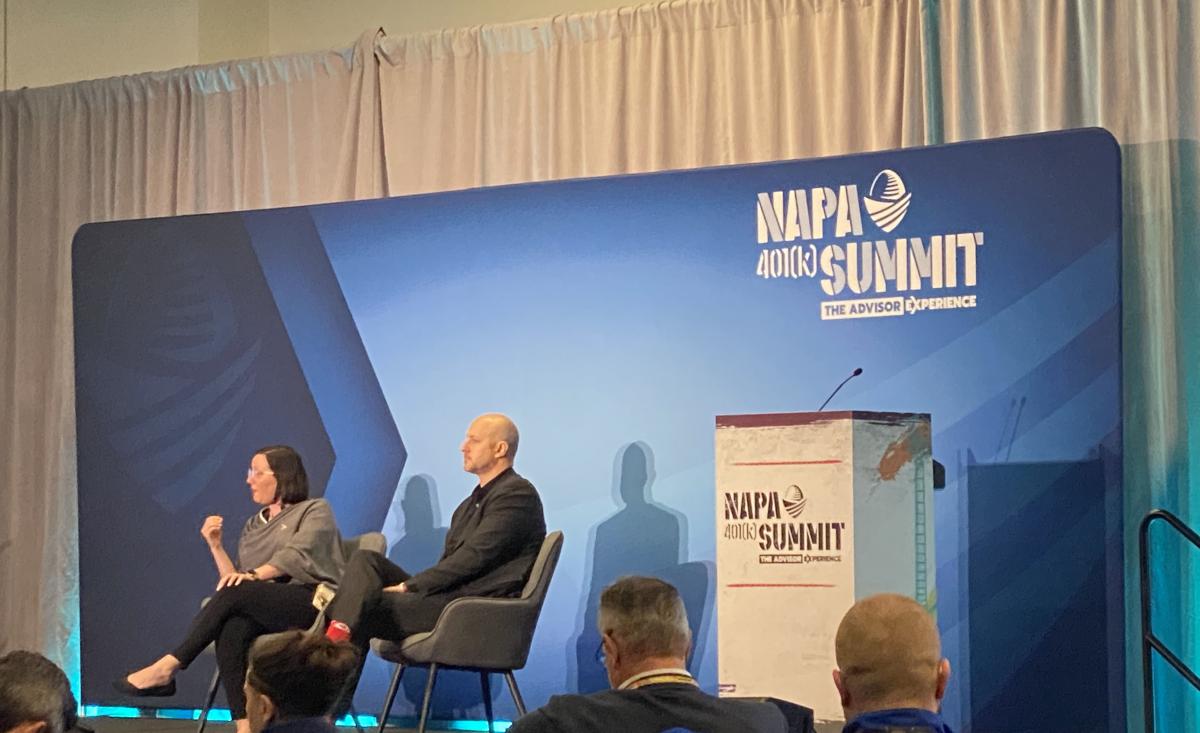 On Monday, at the NAPA 401(k) Summit in Nashville, Tenn., a workshop titled "Understanding the 403(b) Plan Marketplace for 401(k) Practitioners" featured discussions led by Nathan Glassey and Kelsey Mayo. The workshop provided plan advisors with insights into the opportunities available in nonprofits and foundations, hospitals, universities, and more. Can 403(b)s make a difference in your practice? Both Mayo and Glassey believe so.
On Monday, at the NAPA 401(k) Summit in Nashville, Tenn., a workshop titled "Understanding the 403(b) Plan Marketplace for 401(k) Practitioners" featured discussions led by Nathan Glassey and Kelsey Mayo. The workshop provided plan advisors with insights into the opportunities available in nonprofits and foundations, hospitals, universities, and more. Can 403(b)s make a difference in your practice? Both Mayo and Glassey believe so.
Nathan Glassey, Executive Director of the National Tax-deferred Savings Association (NTSA) and an American Retirement Association (ARA) Government Affairs team member, emphasized the importance of understanding the evolving landscape of government regulations affecting the 401(k) and university plan spaces. Kelsey Mayo, the Director of Regulatory Affairs for the ARA, brought her expertise as an ERISA attorney to the table, highlighting the technical aspects of legislative changes and their implications for plan sponsors and practitioners. Mayo described herself as "the nerd on staff," focusing on the "technical review behind a lot of legislative things."
The speakers addressed the audience's questions about the distinctions between 403(b) and 401(k) plans, focusing on the unique characteristics that define the 403(b) marketplace. They discussed the types of organizations eligible to offer 403(b) plans, including 501(c)(3) entities, churches, and public schools, and how these plans differ in terms of ERISA applicability and vendor relationships. Mayo clarified, "your 501(c)(3), your churches and your steeple churches, as well as your church organizations can have a 403(b) plan."
A significant portion of the discussion revolved around the non-ERISA 403(b) plans, which are particularly appealing to small 501(c)(3) organizations due to their voluntary nature and the ability to maintain multiple vendors. As Mayo pointed out, this aspect allows for a level of flexibility and participant choice not commonly found in the 401(k) space, stating, "you really do have to permit multiple vendors... it's very, very, very different."
The conversation also touched on the regulatory nuances of 403(b) plans, such as the absence of ADP testing and the concept of universal availability, which mandates offering the plan to nearly all employees. As Mayo explained, these features can make 403(b) plans an attractive option for certain employers, offering a way to bypass some of the complexities and costs associated with 401(k) plans. "All 403(b) plans do not have ADP testing," Mayo highlighted, underscoring a key difference from 401(k) plans.
Audience questions explored the practical implications of managing 403(b) plans, from vendor selection to the potential for plan conversions and integrating 457(b) plans for additional retirement savings opportunities. The speakers emphasized the importance of understanding each plan sponsor's specific needs and regulatory obligations to navigate the 403(b) landscape effectively. Glassey added, "Working directly with the individual participants... that's where I see the greatest benefit of kind of bringing your practice into the world of 403(b) as well."
Glassey and Mayo encouraged attendees to consider the 403(b) market as a viable and potentially underserved area for expansion, highlighting the opportunity to significantly impact the retirement readiness of employees in the nonprofit and public sectors. Their expertise and willingness to address complex questions underscored the session's value to practitioners looking to deepen their understanding of the 403(b) plan marketplace. Mayo concluded, "this is a group that's underserved right now... a lot of them do need the help and support to offer any plan."

